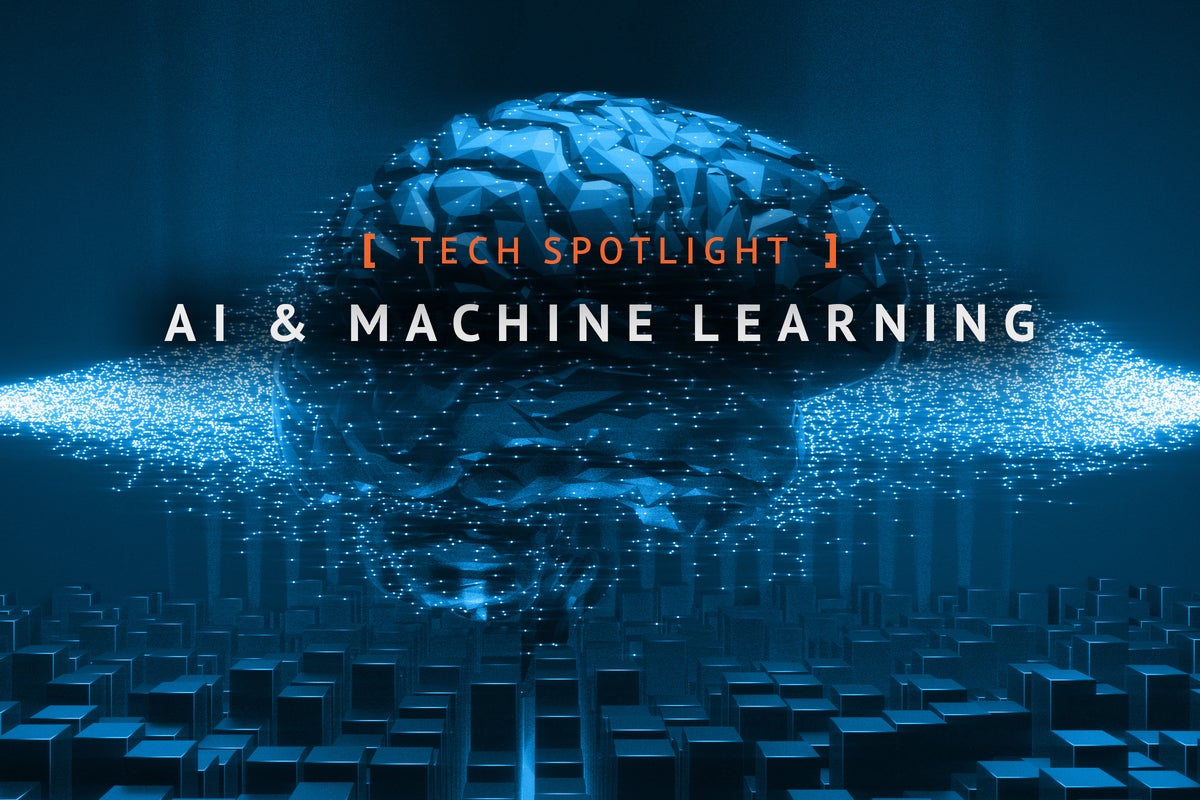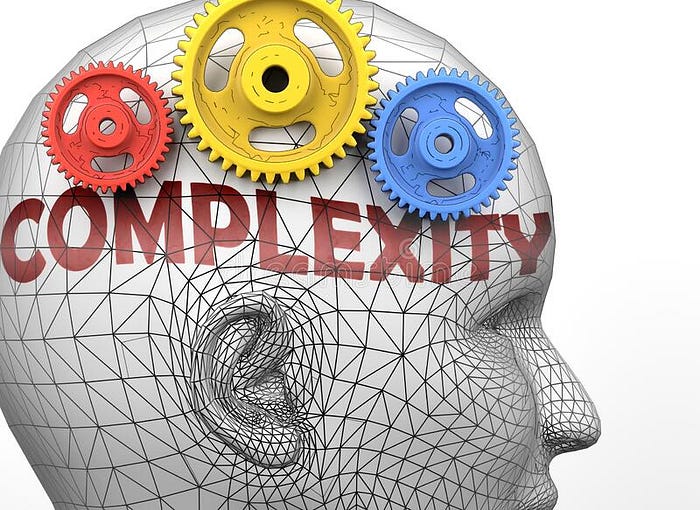How AI can create self-driving data centers

Data centers are full of physical equipment that needs regular maintenance. AI
systems can go beyond scheduled maintenance and help with the collection and
analysis of telemetry data that can pinpoint specific areas that require
immediate attention. "AI tools can sniff through all of that data and spot
patterns, spot anomalies," Schulz says. "Health monitoring starts with
checking if equipment is configured correctly and performing to expectations,"
Bizo adds. With hundreds or even thousands of IT cabinets with tens of
thousands of components, such mundane tasks can be labor intensive, and thus
not always performed in a timely and thorough fashion." He points out that
predictive equipmen- failure modeling based on vast amounts of sensory data
logs can "spot a looming component or equipment failure and assess whether it
needs immediate maintenance to avoid any loss of capacity that might cause a
service outage." Michael Bushong, vice president of enterprise and cloud
marketing at Juniper Networks, argues that enterprise data-center operators
should ignore some of the overpromises and hype associated with AI, and focus
on what he calls "boring innovations."
Hackers Could Use IoT Botnets to Manipulate Energy Markets

Unlike regular IoT botnets that are ubiquitous and available for hire on
criminal forums, high-wattage botnets are not as practical to amass. None are
known to be available for rent by would-be attackers. But over the past couple
of years, researchers have begun investigating how they could be
weaponized—one example looked at the possibility of mass blackouts—in
anticipation that such botnets will someday emerge. Meanwhile, the idea of
energy market manipulation in general is not far-fetched. The US Federal
Energy Regulatory Commission investigated 16 potential market manipulation
cases in 2018, though it closed 14 of them with no action. Additionally, in
mid-May, attackers breached the IT systems of Elexon, the platform used to run
the United Kingdom's energy market. The attack did not appear to result in
market changes. The researchers caution that, based on their analysis, much
smaller demand fluctuations than you might expect could affect pricing, and
that it would take as few as 50,000 infected devices to pull off an impactful
attack. In contrast, many current criminal IoT botnets contain millions of
bots. Consumers whose devices are unwittingly conscripted into a high-wattage
botnet would also be unlikely to notice anything amiss; attackers could
intentionally turn on devices to pull power late at night or while people are
likely to be out of the house.
How to refactor God objects in C#

When multiple responsibilities are assigned to a single class, the class
violates the single responsibility principle. Again, such classes are
difficult to maintain, extend, test, and integrate with other parts of the
application. The single responsibility principle states that a class (or
subsystem, module, or function) should have one and only one reason for
change. If there are two reasons for a class to change, the functionality
should be split into two classes with each class handling one
responsibility. Some of the benefits of the single responsibility
principle include orthogonality, high cohesion, and low coupling. A system is
orthogonal if changing a component changes the state of that component only,
and doesn’t affect other components of the application. In other words, the
term orthogonality means that operations change only one thing without
affecting other parts of the code. Coupling is defined as the degree of
interdependence that exists between software modules and how closely they are
connected to each other. When this coupling is high, then the software modules
are interdependent, i.e., they cannot function without each other.
Cloud storage costs: How to get cloud storage bills under control

Cloud storage is not just about how much it costs per gigabyte stored. There
are also costs associated with the transfer of data in and out of the cloud.
In many services there are two costs: one per-GB each time servers in
different domains communicate with each other, and another per-GB cost to
transfer data over the internet. “For example, in AWS [Amazon Web Services],
you are charged if you use a public IP address. Because you don’t buy
dedicated bandwidth, there is an additional data transfer charge against each
IP address – which can be a problem if you create websites and encourage
people to download videos,” says Richard Blanford, CEO of IT service provider
Fordway. “Every time a video is played you incur a charge, which will soon add
up if several thousand people download your 100MB video.” ... The same issue
applies with resilience and service recovery, where you will be charged for
data traffic between domains to keep a second disaster recovery (DR) or
failover environment in a different region or availability zone. “Moving data
between regions and out of the public cloud also incurs a fee. Most companies
that use a public cloud service pay this for day-to-day transactions, such as
moving data from cloud-based storage to on-premise storage, and costs can
quickly spiral as your tenancy grows,” says Blanford.
How Complexities Disturb and Improve Employee and Customer Experience

Regulations and laws often have good reasons to exist, especially in heavily
regulated industries, such as banking, financials and pharma. Of course, we
can find exceptions where these become difficult to justify. This rarely
occurs when attentive leadership works to demonstrate how these externals
either help the company or protect its stakeholders. When organizations can
communicate consistently, they build buy-in and engagement. ... Develop a
process that translates feedback into solutions. First, identify the balance
in outcomes. If there are complexities that seem unnecessary, find out why
they were designed or implemented in that way. Make sure that teams in
agreement that the complexity is not solving issues as intended but
aggravating others. Take steps toward a solution. If you cannot solve it,
raise the error to your direct leadership or team. Identifying these
sources of complexity is an incredible value, and an opportunity for the
organization to improve. The fewer complexities, the more engaged employees
become, the better experience an organization will deliver to its customers,
partners and employees.
The Dark Side of Data

The ways that we use data have many inherent risks. There are hidden dangers
in algorithmic decision making. Data is imperfect and algorithms often have
built-in biases—biases that all too frequently have traumatic impacts on
individuals and families as in this example of facial recognition gone wrong.
Cathy O’Neil describes the risks of algorithmic dependencies and decisions in
depth in her book Weapons of Math Destruction. We have yet to master data
governance and data ethics. And now we need to step up to algorithmic
governance and data science ethics. The abundance of data and the immense
power that we have to process data bring both opportunity and risk. It is a
grave error to pursue the opportunities without also making a serious
commitment to managing the risks. Yes, data is informative and
valuable—sometimes even invigorating and exciting. But we use it badly with
too much attention to profits and too little attention to people. Data has a
dark side of misuse and abuse. We are failing to step up to the real value
opportunities of data—to improve the human condition—and we are failing to
mitigate the risks inherent in modern data capabilities.
AI Recruiting Tools Aim to Reduce Bias in the Hiring Process

“One of the unintended consequences would be to continue this historical
trend, particularly in tech, where underserved groups such as African
Americans are not within a sector that happens to have a compensation that is
much greater than others,” says Fay Cobb Payton, a professor of information
technology and analytics at North Carolina State University, in Raleigh.
“You’re talking about a wealth gap that persists because groups cannot enter
[such sectors], be sustained, and play long term.” Payton and her colleagues
highlighted several companies—including GapJumpers—that take an “intentional
design justice” approach to hiring diverse IT talent in a paper published last
year in the journal Online Information Review. According to the paper’s
authors, there is a broad spectrum of possible actions that AI hiring tools
can perform. Some tools may just provide general suggestions about what kind
of candidate to hire, whereas others may recommend specific applicants to
human recruiters, and some may even make active screening and selection
decisions about candidates. But whatever the AI’s role in the hiring process,
there is a need for humans to have the capability to evaluate the system’s
decisions and possibly override them.
Data Bytes: Gartner on the IaaS Boom, Plus Cloud Geography, IoT Security

“Enterprises and providers must work together to prioritize and support IoT
security requirements,” said Alexandra Rehak, Internet of Things Practice Head
at Omdia. “Providers need to make sure IoT security solutions are simple and
can be easily understood and integrated. Given how high a priority this is for
enterprise end users, providers also need to do more to educate customers as
well as providing technology solutions, to help ensure IoT security is not a
barrier for adoption.” When it comes to the medium- to long-term focus for IoT
industry leaders, 81% agreed that 5G would “transform” the industry. The top
two benefits from 5G deployment are expected to be the ability to manage a
massive number of IoT devices (67%) and the ability to achieve ultra-low
latency (60%), allowing businesses to be even more agile. “COVID-19 is
expected to impact IoT in 2020,” said Zach Butler, Director, IoT World.
“Despite this, Omdia forecasts potential in some segments including connected
health, as innovators use IoT technologies to tackle some of the pressing
crises of the moment. Long-term, there is little doubt that 5G will change the
face of IoT, particularly in the automotive and manufacturing sectors.
Ransomware: These warning signs could mean you are already under attack

Encryption of files by ransomware is the last thing that happens; before that,
the crooks will spend weeks, or longer, investigating the network to discover
weaknesses. One of the most common routes for ransomware gangs to make their
way into corporate networks is via Remote Desktop Protocol (RDP) links left
open to the internet. "Look at your environment and understand what your RDP
exposure is, and make sure you have two-factor authentication on those links
or have them behind a VPN," said Jared Phipps, VP at security company
SentinelOne. Coronavirus lockdown means that more staff are working from home,
and so more companies have opened up RDP links to make remote access easier.
This is giving ransomware gangs an opening, Phipps said, so scanning your
internet-facing systems for open RDP ports is a first step. Another warning
sign could be unexpected software tools appearing on the network. Attackers
may start with control of just one PC on a network – perhaps via a phishing
email. With this toe-hold in the network, hackers will explore from there to
see what else they can find to attack.
Creating a Progressive Web App with Blazor WebAssembly

The biggest challenges in designing your PWA are based on why you're creating
a PWA. There are, at least, three reasons for creating a PWA. One is that you
simply want your app to start faster (presumably a local copy of the app will
start faster for your user than navigating to your site and downloading the
app). Another good reason for creating a PWA is to reduce demands on the
server: Because navigation between pages is handled locally, the demand on
your server is reduced to just the REST requests that your app may make
(especially if new versions of your app are downloaded from a different
server, further reducing demand on your application server). A third reason
(and probably the one that you're thinking of) is to enable your app to work
even when the user doesn't have a network connection. Be aware: That option
opens you up to a potential world of hurt. To begin with you need to realize
that, while the user is offline, you won't be able to authenticate your user.
You'll have to decide what functionality you'll provide to a
"non-authenticated user" -- all you know about "non-authenticated" users is
that they have successfully logged onto the device that your app is running
on.
Quote for the day:
No comments:
Post a Comment